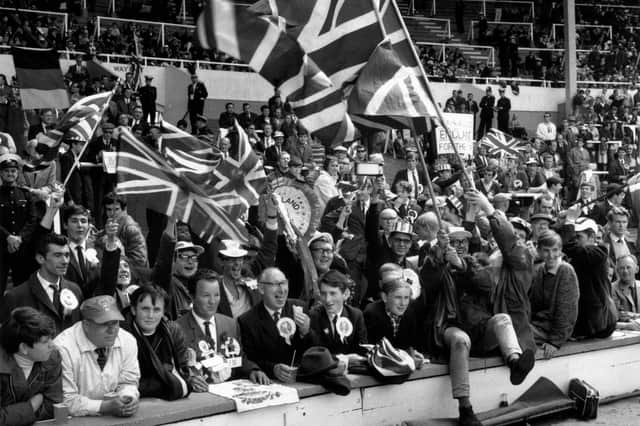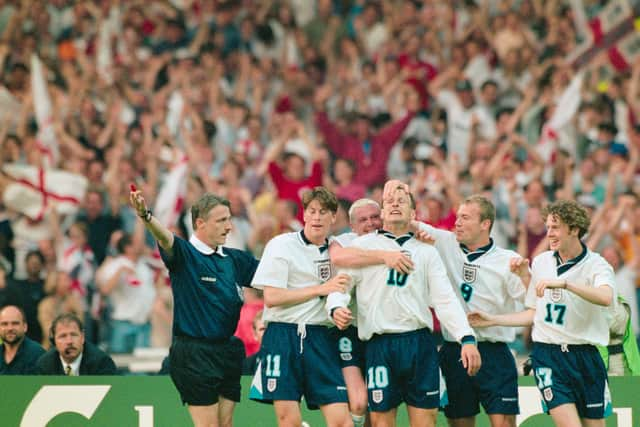World Cup: Why did a lot of England fans not wave the St George's Cross flag at the 1966 final?


Thinking of English international football today, your mind is quickly drawn to the sound of The England Band's trumpeter or images of the St George's Cross painted on faces. England's women will be hoping such vibrant scenes will greet them this Sunday (August 20) when they face Spain in Sydney for the Women's World Cup 2023 final.
The Lionesses beat co-hosts Australia 3-1 to reach their first World Cup Final. It is the first time England have been to the finals since the men lifted the trophy all those years ago in 1966.
Advertisement
Hide AdAdvertisement
Hide AdAnd now England's women have the chance to make their own history.
As you might expect, the excitement ahead of the final has many of us looking back to 1966 for a reminder of how things played out against West Germany on July 20, 1966. One key missing element in many of the images from the time is the St George's flag waving in the crowds. Instead, a large number opted to show their support with the Union Jack flag instead.
NationalWorld takes a look at why that was the case.


It wasn't until the 1990s that the Union Jack Flag was completely replaced by the St George's Cross by England fans. Before this, the Union Jack and the Three Lions were the symbols used to represent England's football team.
Back in 1966, the World Cup mascot - Willie - also wore a Union Jack and the official insignia drawn up by the FA had the Union Jack as its background.
Advertisement
Hide AdAdvertisement
Hide AdEngland's 1982 World Cup strip also featured a blue, red, and white trim on its shirt - a hint at the Union Jack
At Euro 96 - hosted in England - a group game was played between England and Scotland - raising the obvious issue that both could fly the Union Jack flags.
The Scots are well known for their key separate identities and the English for their views on a United Kingdom. Therefore, it's easy to conclude how fanbases settled on showing their support for their individual nations - rather than for Britain as a whole.
A Guardian article points to this tournament as the turning point in the St George's Cross' association with the England team.
Advertisement
Hide AdAdvertisement
Hide AdIt seems prior to the 1990s, that British and English identities were a lot more interchangeable than they are now! It may remain of those nostalgic footballing mysteries as to exactly how the way England's team is represented has changed so much.
Some have even suggested that the change was made as a way to combat the rise of football hooliganism in the 1970s and 1980s.
Comment Guidelines
National World encourages reader discussion on our stories. User feedback, insights and back-and-forth exchanges add a rich layer of context to reporting. Please review our Community Guidelines before commenting.
